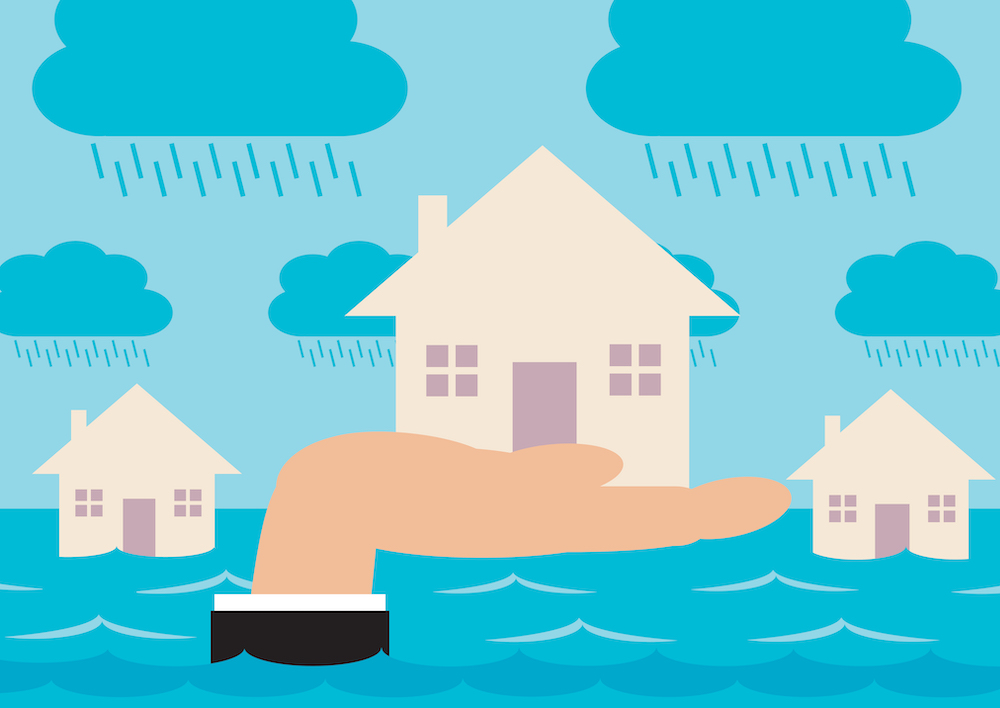Flood Insurance Costs Now in Line With Actual Risk

Recently, the Federal Emergency Management Agency (FEMA) incorporated climate risk into the cost of flood insurance for the first time in their history which will dramatically increase the price of insurance for some homebuyers. Most currently policyholders will see their rates go up by at least 18 percent per year. The new risk assessment plan is called Risk Rating 2.0 and is designed to more accurately reflect the threat of flooding.
While most homeowners will only see a minor increase, roughly $120 per year, some will see much more dramatic increases. According to a recent Seattle Times article, some wealthy homeowners could see their insurance premiums go up by a shocking $14,400 per year. Roughly 3,200 property owners, mostly those in Texas, New Jersey, New York and Florida will see these dramatic increases.
In addition to wealthy homeowners, property owners in Nebraska, Missouri, and Iowa that have creeks, streams or rivers nearby that flood during heavy rains could see a price increase as well.
New technology that takes into account the environs around each home has discovered a whopping 6 million homes that previously didn’t require flood insurance but that now fall into a flood zone due to climate change. In addition, the new flood insurance rates take into account the actual risks to the home and eliminate some subsidies that used to lower the cost of flood insurance. Within the next 30 years, an additional 2 million homes will fall into a flooding risk group. First Street Foundation is the company that has developed the new flood risk ratings for FEMA.
New Risk Rating Program
The previous flood risk assessments used by FEMA assigned homes to flood risk zones and did not take into account the size or value of the home so lower value households were paying roughly the same as wealthy high value homeowners. Basically, middle class homeowners were subsidizing wealthy homeowners, that will change under the new risk rating program.
“It is now going to say if you’re in a risky place, you’re going to get charged more for it, and other people aren’t footing the bill,” said Nick VinZant, senior research analyst for QuoteWizard in a recent Seattle Times article.
However, Risk Rating 2.0 is already under fire as wealth policyholders in coastal communities have started complaining about the price increases and some members of the House and Senate are reacting.
Senate Majority Leader Chuck Schumer, D-N.Y., has tried to extend the current system by another five years and Rep. Charlie Crist, D-Fla., recently led a bipartisan group that is demanding changes to the increases. In fact, 38 congressional members signed a letter in September that expressed concern over the burden of rate increases and asked that the new rating system be delayed.
Flooding is set to get worse
Flooding is currently the most common type of natural disaster in the U.S. It is also the costliest natural disaster that the U.S. faces and it is only set to get worse. According to a 2017 report by the Union of Concerned Scientists, and additional 170 coastal communities will face chronic flooding risk (at lease 26 times per year) over the next two decades which is double the number of at-risk locations today.
Roughly 5 million homeoweners currently have government backed flood insurance which provides $1.3 trillion in coverage across the United States. Unfortunately, the National Flood Insurance Program (NFIP) which is run by FEMA was $20 billion in debt due to the fact that premiums rarely reflect the true flood risk of the home which is why Risk Rating 2.0 was created.
“Frankly, the system was circa 1986,” Roy Wright, a former executive director of NFIP said in the recent Seattle Times article. “So much in the insurance world had matured and grown, and they were still using that old model. It’s like driving a 1986 Buick. It drives, it goes from Point A to Point B, but it could be kind of clunky.”
Risk Rating 2.0 uses a model that was developed by First Street Foundation, this model allows analysts to study the topography around every home when setting a flood insurance premium. In addition to make premiums more accurately reflect the risk of coastal properties, the new rates are designed to dissuade people from moving to areas where the risk of flooding is high.
First Street discovered a whopping 6 million properties that were at-risk properties that had been missed by FEMA model as well as 2 million additional homes that aren’t currently threatened but will fall into the flood-risk category over the next 30 years.
For Fast Free Flood Insurance Quotes, Please Call Us at 888-620-1954!
.
